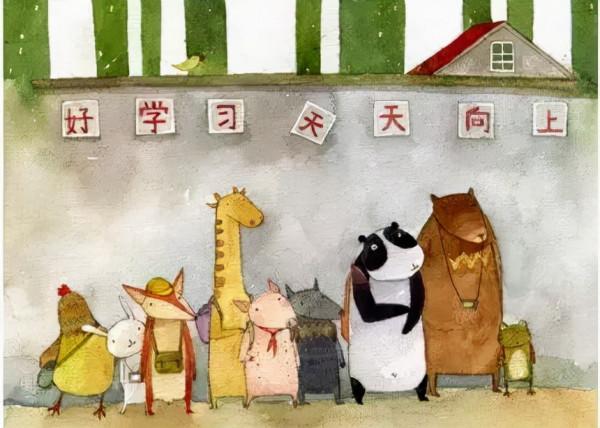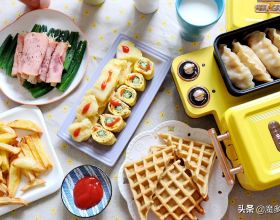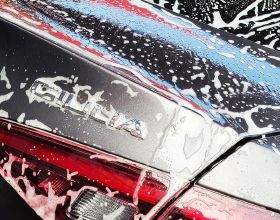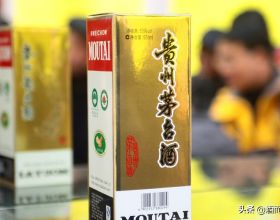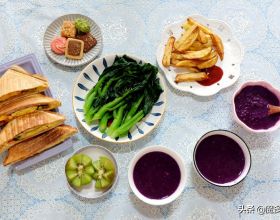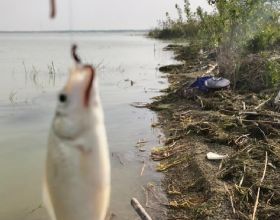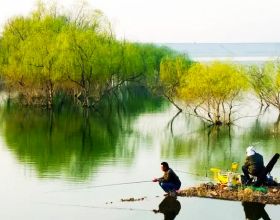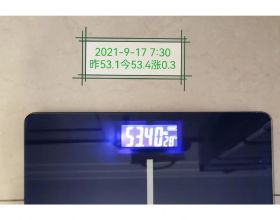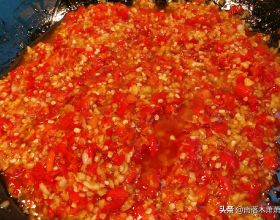小學英語知識點大全,涵蓋全部39個知識點,提升必備!
1現在進行時
表示正在發生的事情或進行的動作,常與now,listen,look等詞連用,結構是主語+be動詞(am, is, are)+動詞ing.
如:It is raining now.
外面正在下雨
It is six o’clock now.
現在6點了
My parents are reading newspapers in the sitting room.
我父母正在客廳看報紙
Look! The children are having a running race now.
看!孩子們正在賽跑
問句將be動詞移前,否定句在be動詞後+not.
2一般現在時
表示經常反覆發生的事情或動作,常與often, usually, sometimes, always, every day(week year…) on Sundays等詞連用。
結構是主語+動詞原形;當主語為第三人稱單數即he,she, it, Tom, my mother, the boy等詞時,動詞後加s或es.
如:We have an English lesson every day.
我們每天都要上英語課
Do the boys run faster than the girls? Yes, they do.
男孩比女孩跑的快嗎?是的
問句藉助於do, does否定句藉助於don’t, doesn’t,後面動詞一定要還原。
3一般過去時
表示發生在過去的事情或存在的狀態,常與just now; a moment ago; … ago; yesterday; last ( week; month; year; Monday; weekend); this morning等詞連用。
結構是主語+be動詞的過去式(was; were)或主語+動詞的過去式。
注意:be動詞與動詞過去式不可同時使用。
如:My earphones were on the ground just now.
我的耳機剛剛還在呢。
Where were you last week? I was at a camp.
你上個星期去哪了?我去野營了
What did you do yesterday? I visited a farm
你昨天去幹嘛了?我去參觀農場了。
問句有be動詞將be動詞移前,沒有be動詞藉助於did,後面動詞還原;
否定句有be動詞在後面加not,沒有藉助於didn't後面動詞還原。
4一般將來時
表示將要打算髮生的事情或動作,常與tomorrow, next week(year; Tuesday…), this week( weekend ;evening; afternoon;…)today等詞連用。結構是主語+be(am, is, are) going to + 動原或主語+will +動原。
如:What are you going to do tomorrow? I am going to have a picnic.
你明天要去幹嘛?我要去野餐。
The childre are going to have a sports meeting next week.
孩子們下個星期將參加運動會。
Tom will/is going to see a play with his father this evening.
Tom今晚將和父母去看演出。
問句將be動詞或will移前;否定句在be動詞或will後加not.
5情態動詞
can; can’t; should; shouldn’t; must; may後一定加動詞原形。
如:The girl can’t swim, but she can skate.
女孩不會游泳,但是會滑冰
Don’t talk in class, you should listen to the teacher carefully.
不要再課上說話,你應該認真聽老師講。
6祈使句
肯定祈使句以動詞原形開頭;否定祈使句以don’t加動詞原形開頭。
如:Open the box for me ,please.
請為我開啟盒子。
Liu Tao! Please get up earlier tomorrow.
劉濤,明天請早點起床!
Don’t walk on the grass!
不要在草地上走!
Helen! Don’t climb the tree,please.
海倫!不要爬樹。
7go的用法
去幹嘛用go +動詞ing
如: go swimming; go fishing;
go skating;
go camping;
go running;
go skiing;
go rowing…
8比較
than 前用比較級;as…as之間用原級。
如:My mother is two years younger than my father.
我媽比我爸年輕兩歲。
Liu Tao jumps as far as Ben.
劉濤跳得和本一樣遠。
9喜歡做某事
用like +動詞ing或like+ to + 動原。
如:Su Yang likes growing flowers.
蘇陽喜歡種花。
The children like to play with lanterns at Spring Festival.
孩子們喜歡在春節去玩花燈。
10想要做某事
用 would like +to+動原或want + to +動原。
例:I’d like to visit the History Museum.=I want to visit the History Museum
11some
用於肯定句中,在否定句和問句中改為any,但當表示委婉語氣時仍用
如:Can I have some writing paper? Would you like some orange juice?
12代詞
人稱代詞主格做主語用一般放在句首或動詞前,主格分別是 I you he she it we you they。
賓格做賓語用,一般放在動詞或介詞後
如:Open them for me. Let us …, join me等。
賓格分別是me you him her it us you them。
形容詞性物主代詞放在名詞前,不能單獨使用,分別是my your his her its our your their
名詞性物主代詞相當於形物加名詞,它只能單獨使用後面不好加名詞,分別是mine yours his hers its ours yours theirs。
13介詞
介詞後要麼不加動詞,加動詞只能加動詞ing形式
如:be good at running;
do well in jumping;
14時間介詞
季節前,月份前用介詞in
如:in summer;in March
具體的哪一天如星期幾,幾月幾日用介詞on
如:on Saturday; on the second of April; on Wednesday morning
在幾點鐘前用介詞at
如:at a quarter to four;
只在上下午晚上用in
如:in the morning/ afternoon/ evening;
但在夜間用at night。
另:季節,月份和星期前不好加the.
15名詞複數構成的方法
有規則的有:
(1)直接在名詞後加s
如orange—oranges; photo—photos;
(2) 以x, s, sh, ch 結尾的加es
如:box—boxes; glass—glasses; waitress—waitresses; watch—watches;peach--peaches
(3) 以子音字母加y結尾的改y為i加es
如:study—studies;library—libraries; hobby—hobbies; family—families;
(4)以f, fe結尾的改f, fe 為v+es如:knife—knives; thief—thieves(注:以o結尾的我們學過的只有mango加es, mango—mangoes其餘加s,)
不規則的有:
man—men; woman—women; people—people; child—children
16動詞第三人稱單數的構成
(1)直接在動詞後加s
如:run—runs; dance—dances
(2)以s,sh,ch,o結尾的加es
如:do—does;go—goes;wash—washes;catch—catches
(3)以子音字母加y結尾的改y為i加es
如:study—studies; carry—carries;
17現在分詞的構成
(1)直接在動詞後加ing
如:sing—singing; ski—skiing;
(2)雙寫詞尾加ing
如:swim—swimming; jog—jogging;run—running;
(3)以不發音的e結尾的去e加ing
如:ride—riding; dance—dancing; make—making;
18規則動詞過去式的構成
(1)直接在動詞後加ed
如:clean—cleaned; milk—milked; play—played;
(2)以e結尾的直接加d
如:dance—danced; taste—tasted;
(3) 以子音字母加y結尾的改y為i加ed
如:study—studied;carry—carried;
(4)雙寫詞尾加ed
如:stop—stopped; jog—jogged;
不規則的有:am,is—was; are—were; do,does—did; have,has—had; go—went; meet—met; sit—sat; see—saw; get—got; tell—told; run—ran; come—came; steal—stole; read—read;
19形容詞副詞比較級的構成
規則的:
(1)直接在形容詞或副詞後加er
如;small—smaller; low—lower;
(2)以e結尾的加r
如:late—larer;
(3)雙寫詞尾加er
如:big—bigger; thin—thinner; fat—fatter;
(4) 以子音字母加y結尾的改y為i加er
如:heavy—heavier; early—earlier;
不規則的有:
good, well—better(最高階為best); many, much--- more(最高階為most); far---farther;
20rain與snow的用法
(1)作為名詞意思是雨水和雪是不可數名詞
如:There is a lot of rain there in spring. 那兒的春天有很多雨水。
(2) 作為動詞意思是下雨和下雪,有四種形式分別是:
動詞原形rain, snow;
第三人稱單數rains ,snows;
現在分詞raining;snowing
過去式rained;snowed;
如:①Look! It is raining now. 瞧!天正在下雨。
②It often rains in Nantong in summer.南通夏天經常下雨。
③ It rained yesterday.昨天下了雨。
④It is going to rain tomorrow. 明天要下雨。
(3)形容詞為rainy 和snowy 意思是有雨的和有雪的
如:It is often rainy here in spring.這兒的春天經常是有雨的。
If it is rainy tomorrow, I’ll stay at home.如果明天是有雨的,我將呆在家裡。
21比較級
注意只有同類事物才可進行比較。
如:My eyes are bigger than hers.Your school bag is heavier than mine. My computer is nicer than Nancy’s. My brother is stronger than me.
22have, has
表示某人有(has用於第三人稱單數);There is/ are;
There was/ were 表示某地存在有
注意There be 句型的就近原則
單數或不可數用there is /was;
複數用there are/ were.
23本身就是複數的詞
眼鏡glasses; 耳機earphones; 鞋shoes;褲子trousers等詞本身是複數。
如:My glasses were on the chair just now.
但如果表示這雙,這副,一雙的時候用單數
如:There is a pair of chopsticks on the plate. This pair of earphones is for you.
24五個母音字母分別是Aa, Ee, Ii, Oo, Uu;
25一個的用法
a用於子音前不是子音字母前;an 用於母音前不是母音字母前。
如:There is an ’s’, a ‘t’, a ‘u’, a ‘d’ ,an ‘e’, an ‘n’,and a ‘t’ in the word ‘student’.
26時間表示法
有兩種:
(1)直接讀時鐘和分鐘。
如6:10讀成 six ten; 7:30讀成seven thirty; 8:45讀成eight forty-five;
(2)用to與past表示。
在半小時包括半小時以內用幾分past幾點
如:6:10讀成ten past six; 7:30讀成half past seven;
過了半小時用下一個鐘點差幾分
如7:45讀成a quarter to eight; 9:50讀成ten to ten;
27基數詞變序數詞的方法
基變序有規律,結尾加上th; 一二三特殊例,結尾字母t、d(即first, second, third);
八去t, 九去e, ve要用f替(即eigh—eighth; nine—ninth; five-- fifth ;twelve—twelfth);
ty改y為ie後加th別忘記(即整十數如twenty—twentieth;forty—fortieth);
幾十幾十位為基個位為序(如第二十一為twenty-first)。
另外強調序數詞前一定要加the。
28日期的表示法
用the+序數詞+ of +月
如:三月三日 the third of March;
12月25日 the 25th of December.
29both 表示兩者都
如:My parents are both teachers.
all表示三者以上都
如:The students are all very excited.
30節日的表示法
有day的節日前用on.
沒有day的節日前用at,
如:at Christmas; on Christmas Day; at New Year; on New Year’s Day.
31激動興奮的
excited表示激動的,興奮地主語是人;
exciting表示令人激動的,令人興奮的主語是事情
如:The running race is very exciting, so all the students are very excited.
賽跑非常令人激動,因此所有的學生都很激動。
32比較
兩者比較用比較級,三者以上比較用最高階
如:Who runs faster, the boy or the girl? The boy does
誰跑得更快,男孩還是女孩?男孩。
Which season do you like best? I like autumn best.
你最喜歡哪個季節?我最喜歡秋天。
Which season do you like better, summer or winter? I like winter better.
你更喜歡哪個季節,夏天還是冬天?我更喜歡冬天。
33動詞還原的用法
前面用了do, does did, don’t, doesn’t didn’t後面動詞要還原。
如:Did she watch TV last night?
Helen doesn’t like taking photos.
34到了
到達用get to
但注意到家,到這兒,到那兒不可以加to
如:get home; get here; get there,
另外go home; come here; go there也一樣。
35長著和穿著
長著什麼用with
如:the girl with big eyes 大眼睛的女孩;
穿著什麼用in
如:the man in black穿黑衣服的男人
或:the woman in the white skirt 穿白色短裙的婦女
36讓某人做某事
用let sb後加動詞原形
如:Let’s water the flowers together.
是該做…的時候了用It’s time for+名詞或It’s time to +動原。
幫助某人做某事是help sb with sth
如:幫我學英語是 help me with my English
37樹上
外來的東西在樹上用in the tree
如:the bird in the tree;
樹上長的用on the tree
如:the apples on the tree
38運動和樂器
球類之前不加the;
樂器之前必須加the
如:play the piano; play football
39get後加比較級表示變得更怎麼樣
如:get stronger; get longer


